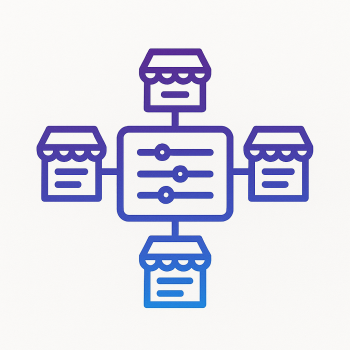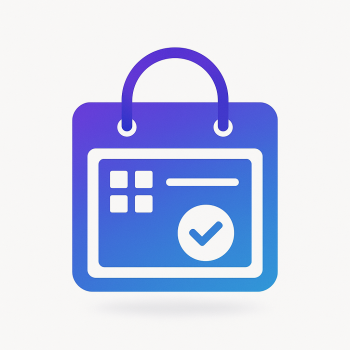How to Secure Your Magento 2 Store Against Common Vulnerabilities

Why Security Matters for Your Magento 2 Store
Running an online store comes with risks—hackers, data breaches, and malware are constant threats. Magento 2, being a powerful eCommerce platform, is often targeted due to its popularity. If your store gets compromised, you could lose customer trust, revenue, and even face legal consequences.
But don’t worry! With the right security measures, you can protect your Magento 2 store from common vulnerabilities. Let’s dive into practical steps to keep your store safe.
1. Keep Magento 2 and Extensions Updated
Outdated software is one of the biggest security risks. Magento regularly releases patches to fix vulnerabilities, so always update to the latest version.
How to check for updates:
composer show magento/product-community-editionTo update, run:
composer update magento/product-community-edition --with-dependenciesThen apply the updates:
php bin/magento setup:upgrade
php bin/magento setup:di:compile
php bin/magento setup:static-content:deploy -fPro Tip: Enable automatic security notifications in your Magento admin under Stores > Configuration > Advanced > System > Security.
2. Secure Your Admin Panel
The admin panel is a prime target for attackers. Here’s how to lock it down:
- Change the default admin URL from
/adminto something unique. - Enable Two-Factor Authentication (2FA) for admin users.
- Limit login attempts to prevent brute-force attacks.
How to change the admin URL:
php bin/magento setup:config:set --backend-frontname="yourcustomadmin"Then clear the cache:
php bin/magento cache:flush3. Use Strong Passwords & User Permissions
Weak passwords are an easy entry point for hackers. Enforce strong passwords for all admin and customer accounts.
Best practices:
- Use at least 12 characters with a mix of letters, numbers, and symbols.
- Avoid common passwords like "admin123" or "password".
- Implement role-based access control (RBAC) to limit admin permissions.
How to enforce strong passwords:
Go to Stores > Configuration > Customers > Customer Configuration > Password Options and set a strong password policy.
4. Enable HTTPS with SSL/TLS
An SSL certificate encrypts data between your store and customers, protecting sensitive information like credit card details.
How to enable HTTPS:
- Purchase an SSL certificate from a trusted provider (e.g., Let’s Encrypt, Comodo).
- Install it on your server (ask your hosting provider if unsure).
- Force HTTPS in Magento by going to Stores > Configuration > Web > Base URLs and set both Secure and Unsecure URLs to HTTPS.
5. Protect Against SQL Injection & XSS Attacks
SQL Injection and Cross-Site Scripting (XSS) are common attack methods. Magento 2 has built-in protections, but you should:
- Use prepared statements in custom code.
- Sanitize user inputs.
- Enable Content Security Policy (CSP) headers.
Example of secure database query in Magento:
$collection = $this->collectionFactory->create()
->addFieldToFilter('status', ['eq' => 1])
->addFieldToSelect(['name', 'price']);6. Set Up a Web Application Firewall (WAF)
A WAF filters malicious traffic before it reaches your store. Popular options include:
- Cloudflare
- Sucuri
- ModSecurity
How to enable Cloudflare WAF:
- Sign up for Cloudflare and point your DNS to their servers.
- Enable the WAF in the Cloudflare dashboard under Security > WAF.
- Set up firewall rules to block suspicious traffic.
7. Regular Backups & Disaster Recovery
If something goes wrong, backups are your safety net. Follow the 3-2-1 rule:
- 3 copies of your data
- 2 different storage types (e.g., cloud + local)
- 1 offsite backup
How to automate Magento 2 backups:
php bin/magento setup:backup --dbOr use a tool like MageBackup for scheduled backups.
8. Monitor & Scan for Vulnerabilities
Regular security scans help detect issues before they become problems. Use tools like:
- Magento Security Scan Tool (free)
- Nessus
- OpenVAS
How to use Magento Security Scan:
- Sign up at Magento Security Scan.
- Enter your store URL and run a scan.
- Review the report and fix any vulnerabilities.
9. Secure File Permissions
Incorrect file permissions can expose sensitive data. Set these recommended permissions:
- Folders: 750 or 755
- Files: 640 or 644
- Critical files (var/, app/etc/, pub/): Restrict write access
How to set permissions:
find . -type d -exec chmod 755 {} \;
find . -type f -exec chmod 644 {} \;10. Use a Secure Hosting Provider
Not all hosting is equal. Choose a provider specializing in Magento 2 with:
- Dedicated firewalls
- Malware scanning
- DDoS protection
- Regular server updates
Magefine Hosting offers optimized Magento 2 security with built-in protections.
Final Thoughts
Securing your Magento 2 store isn’t a one-time task—it’s an ongoing process. By following these steps, you’ll significantly reduce risks and keep your store safe from common threats.
Need extra security? Check out Magefine’s security extensions for enhanced protection!





